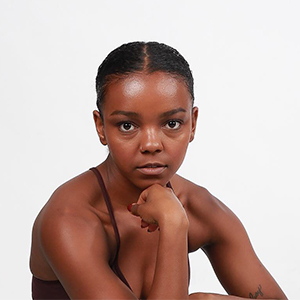Q&A with Senior Choreographer Laila Franklin

Senior dance major Laila Franklin (B.F.A. '19, contemporary dance) sits down to discuss her original work, Leaving So Soon?, that was recently featured in the Senior Choreographers’ Concert: Square One. Franklin shares her creative process and how her Boston Conservatory experience has prepared her to become a dancer, choreographer, and scholar.
Tell us about your new dance work, Leaving So Soon?.
Leaving So Soon? is a study on liminal spaces and rites of passage, based on the work of anthropologists Arnold van Gennep and Bjørn Thomassen. In anthropology, liminal spaces are places of transition, the ambiguous “in-between” periods in life separating what was and what will be. Gennep and Thomassen’s study discusses the theory that “liminal spaces are structurally unstable, so one needs to be in them with other people or alone very briefly, otherwise the structure will collapse.” My intention was to start and end my piece asking the same questions: what happens when someone is lost or left behind in a liminal space? What happens when others seem to have a smoother transition embracing what is new and fresh?

What inspirations helped shape the piece?
I first learned about liminal rites sophomore year in a class on critical theory. In a section on phenomenology, we explored identity and how personal identifiers do not necessarily line up with others’ perceptions of us. We explored the cultural significance of markers that connect and differentiate us, like names, gender, sexuality, and age. I also learned about the ambiguity of liminal spaces, and the cycle of when old markers lose meaning and new markers are adopted, willingly or unwillingly.
I was also inspired by the atmosphere and experience that Faye Driscoll (Bessie Award-winning choreographer and director) created during a performance I attended. The emotional journey Driscoll took the audience on with her work was inspirational, and I thought, “I want to make work that will take people on journeys.”
What was it like directing your peers?
It was definitely strange to be on the other side, knowing I might make decisions that could affect them. However, I appreciated the professionalism, cooperation, and collaborative spirit amongst my colleagues. The opportunity to work on this project helped cultivate my leadership and communication skills, especially in dance spaces.
How did the audience respond to your work? Was it what you were expecting?
I heard responses along the lines of “I don’t know what that was about exactly, but I felt it and it took me on a journey.” Many commented on the beauty of the piece and that the combination of the dance with the lighting and costumes evoked feelings of sadness, confusion, and a sense of being lost. Those were all emotions I felt working on this project and hoped to convey. Ultimately, I was really proud of what the dancers and I were able to put together.
What are some of the most important lessons you’ve learned at Boston Conservatory?
The teachers and supervisors I’ve had here at Boston Conservatory have been some of the most influential people in my life. My ballet teacher Tai Jimenez once told me, “You don’t have to be joyous, you just have to create the space for joy,” which is something that has stuck with me since my sophomore year. Teachers like Kurt Douglas and Duane Lee Holland, Jr. have modeled for me what it means to be both a dancer and an academic. They taught me that if you keep showing up, keep doing the work, keep doing the research, and keep connecting with people, you can end up in spaces where you get to do what you love after graduation.
How have you changed as an artist since you started at Boston Conservatory
As a student, being at Boston Conservatory allowed me to work with so many great choreographers. Observing each artist’s processes helped me shape the way I approach and create work. Because I have worked with so many people, I was keen to create a project where I could use my observations to lead rehearsals and the entire creative process. Being a student myself also made me highly considerate of my peers’ schedules.
I am ever grateful to the mentors who have encouraged me to reach for my dreams. Who taught me that it’s okay to stray from the norm and pursue your own path. They motivated me to continue studying dance even when I felt like there was no space for me. I am overwhelmed by the continual emotional, spiritual, and financial support from people who believe in me and my eventual artistic career.
What are your plans after you graduate?
In the short term, I plan to pursue a M.F.A. in dance with a concentration on choreography at the University of Iowa as an Iowa Arts Fellow. I am excited to keep studying topics like philosophy, critical theory, and anthropology in addition to dance. In the long term, I hope to be a professional choreographer.
Apart from dance, what else are you passionate about?
Baking—I make a pretty amazing pumpkin loaf! I also enjoy binge-watching reality TV, and fun fact: I am a George Howell-trained barista.
